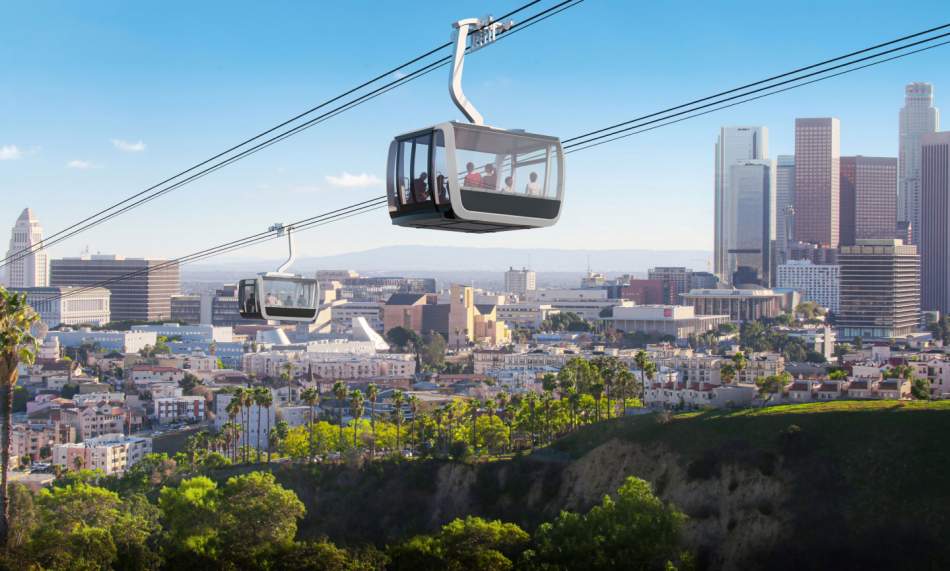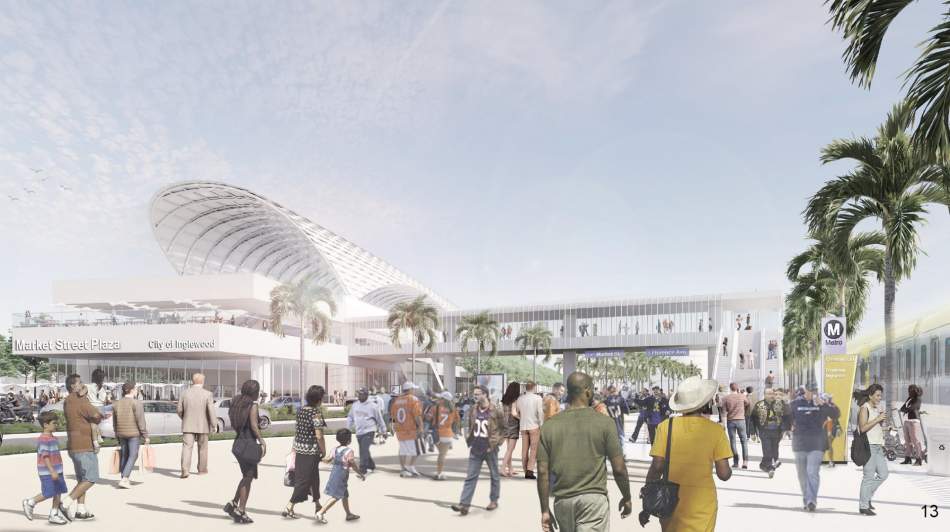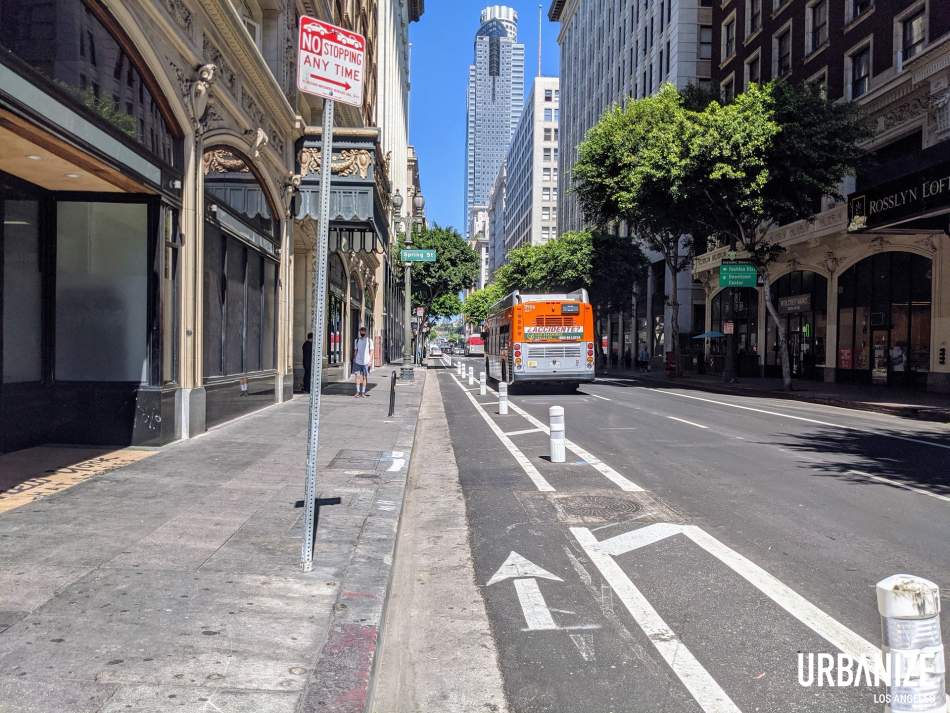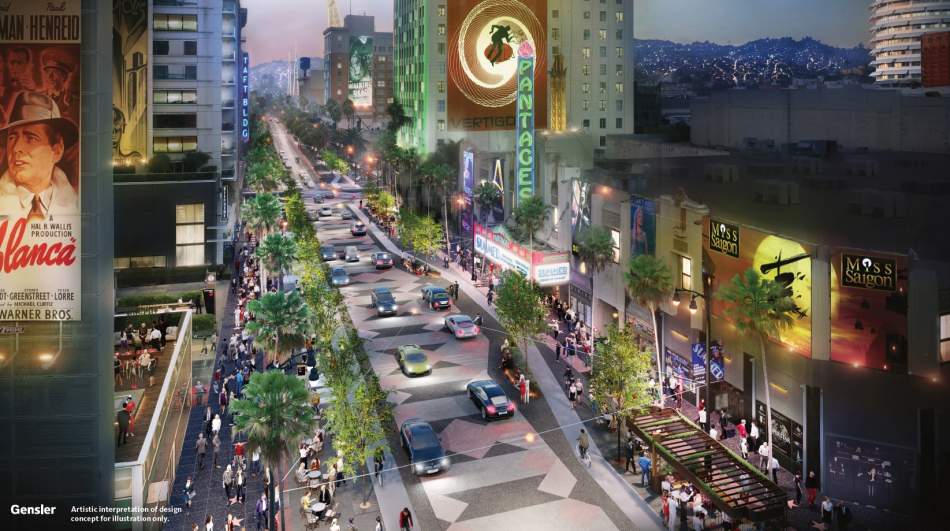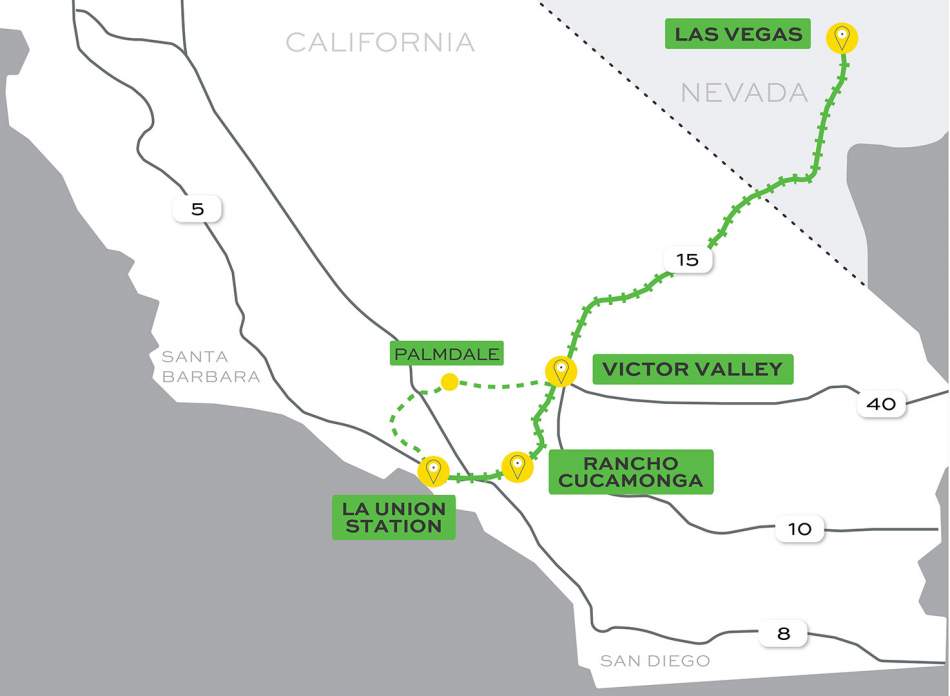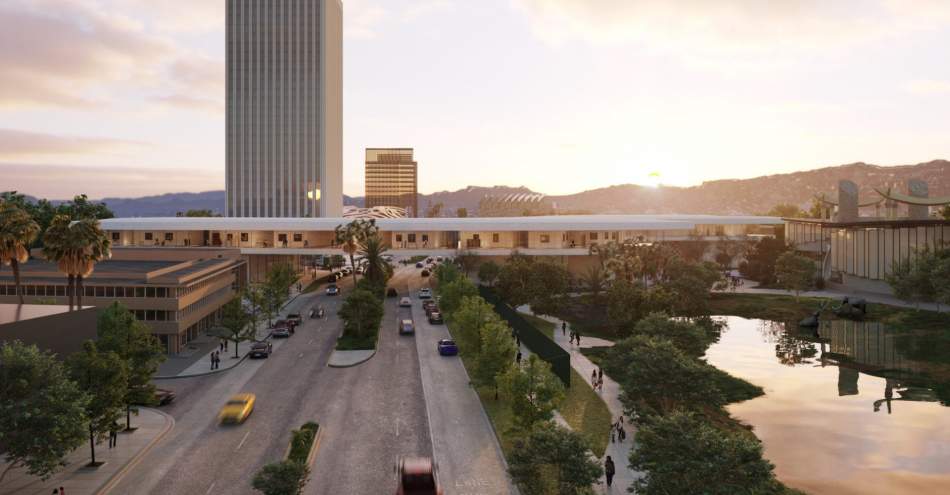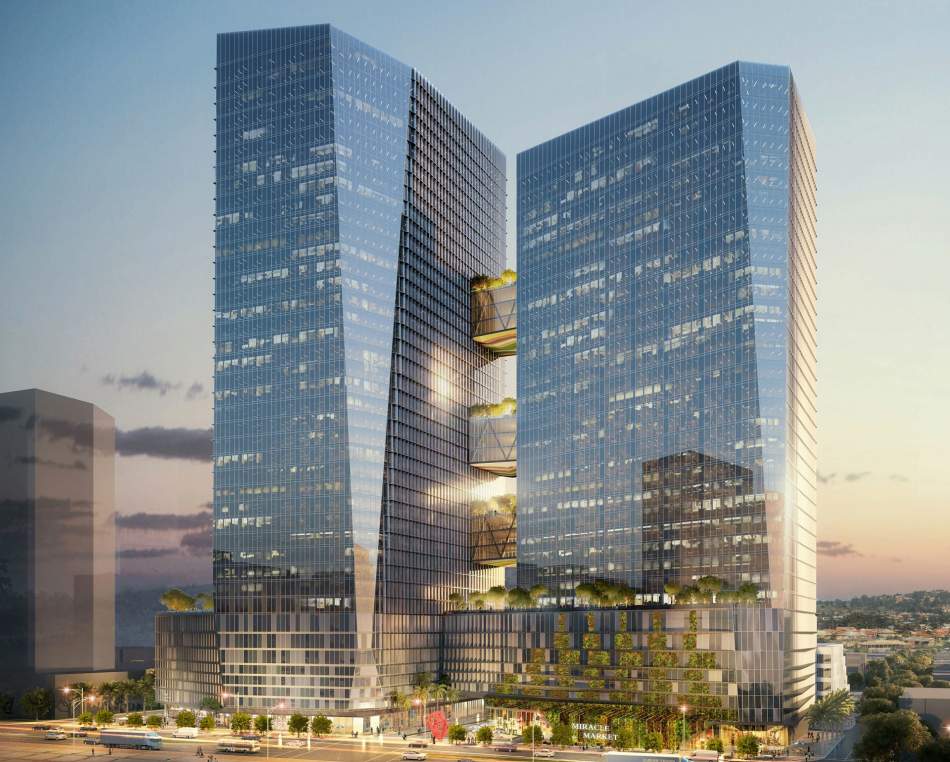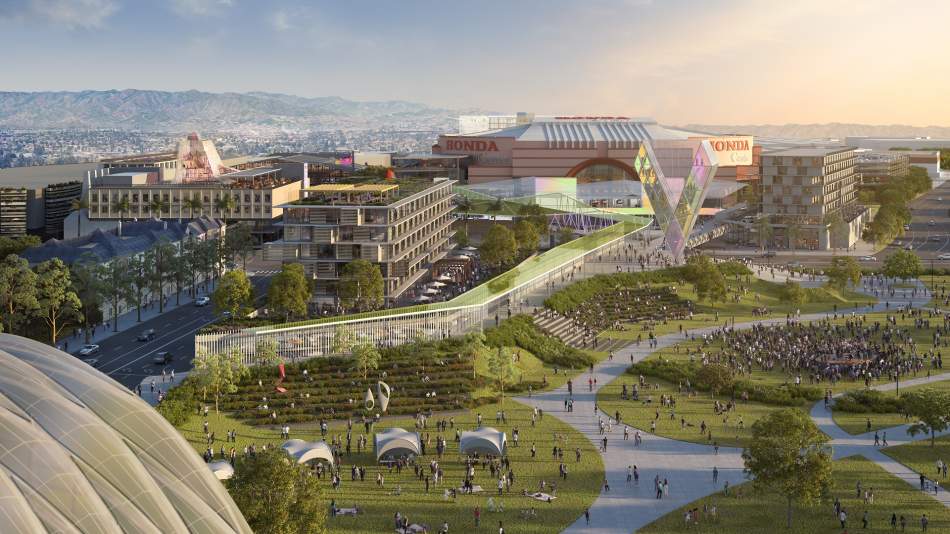In Los Angeles, as in most cities across the globe, life was upended during 2020. The COVID-19 pandemic has devastated small businesses, further exposed systemic inequities, and most tragically, claimed the lives of thousands of our friends, family members, and neighbors. And amid the greatest public health crisis in living memory, Angelenos took to the streets in protest of systemic racism and injustice.
Despite all that has happened – much of which we wish could be undone – the wheels of change have continued to turn in our city. Here is a look back at Los Angeles’ biggest stories in real estate development, architecture, and urban planning during 2020.
Less conventional transportation projects have their day
While Los Angeles has spent billions over the past 30 years to rebuild its rail network, 2020 was the year when other transportation modes came to the forefront.
Gondola systems, long discussed as a means of traversing hillier sections of the city, are being considered to provide new access points to two Los Angeles landmarks: the Hollywood Sign and Dodger Stadium. Both projects, which will require lengthy studies before being cleared for construction, have been the subject of pushback due to potential impacts to Griffith Park and Los Angeles State Historic Park, respectively.
In Westchester, construction is well underway for the new LAX Automated People Mover system – the centerpiece of the airport’s $5.5-billion landside access modernization program. The monorail-like system, which will run more than two miles, will connect to two ground transportation hubs and a new station planned on the Crenshaw/LAX Line.
Two miles east, the City of Inglewood is planning its own people mover system which would connect the Crenshaw/LAX Line’s Downtown Inglewood Station with SoFi Stadium, the Hollywood Park development, and a proposed arena for the NBA’s Los Angeles Clippers. That 1.6-mile system – which comes with some very rosy ridership forecasts – is scheduled to begin operating in 2026.
A more conventional project is taking shape in Santa Ana – the OC Streetcar. The roughly four-mile system, which follows the alignment of a former Pacific Electric Railway line, will connect Santa Ana with the neighboring city of Garden Grove. Operations are expected to begin in 2022.
New bus and bike lanes
The economic slowdown resulting from the COVID-19 pandemic has dealt a blow to Metro’s sales tax and farebox revenue, but the lighter traffic which has resulted from the virus has also created opportunities for urban transportation.
Over the past year, Metro and Los Angeles officials have opened new bus-only and protected bike lanes on several Downtown arterials, and are considering similar projects on other important corridors such as Lincoln Boulevard and Alvarado Street.
Large streetscape plans could also bring new pedestrian safety measures and bicycle infrastructure to the Hollywood Walk of Fame – as part of the Heart of Hollywood Initiative – and to the corridors flanking Exposition Park, in concert with the state-owned green space’s new master plan.
Setbacks and Changes
The year 2020 also saw delays or significant changes to many of the region’s major projects.
The beleaguered Crenshaw/LAX Line, already delayed by more than a year, is now not expected to begin serving passengers until well into 2021. And even if the project makes its debut by that newly appointed date, plans to rebuild an at-grade crossing at Florence and Centinela Avenues with a rail viaduct could impact operations for years to come.
Likewise, Brightline West – the private sector effort to connect the Las Vegas Strip to San Bernardino County via high-speed rail – saw a scheduled late 2020 groundbreaking date come and go, as lukewarm investor interest in a $2.4-billion bond offering postponed construction.
Some delays – or even cancellations – could come as welcome news. Earlier this year, the Metro Board of Directors voted to discontinue consideration of a proposed extension of the Eastside Branch of the L/Gold Line which would have run on a viaduct adjacent the SR-60 Freeway. Funding for that alternative – which was part of a two-pronged extension planned for the L/Gold Line – will be redirected to other projects in the San Gabriel Valley, pending the results of an ongoing study.
Limits on large gatherings due to COVID-19 have repeatedly delayed the opening of a new Los Angeles landmark – the Academy Museum of Motion Pictures. The museum, which has built its $400-million home at intersection of Wilshire Boulevard and Fairfax Avenue, recently announced that its opening has been postponed to September 2021.
But the pandemic failed to forestall the revamp of the Academy Museum’s larger next-door neighbor: LACMA. In early 2020, the museum began demolition of much of its original campus, clearing a new two-story structure – designed by Peter Zumthor – which would span across Wilshire Boulevard.
The LACMA revamp has been faced with vocal opposition preservationists and other museum stakeholders, with one group even organizing a design contest to solicit alternatives to the Zumthor building. The project has also been beset by lingering questions of its budget, as estimated costs have grown from $600 million in 2017 to $750 million in 2020 – and according to an internal estimate by Los Angeles County, potentially as much as $900 million.
Hope Springs Eternal
If there is one thing that can be said about real estate developers, it is that they are an optimistic bunch. The proof of that can be seen in the slew of ambitious plans for large commercial developments that emerged throughout 2020, even as COVID-19 emptied towers and campuses across Los Angeles.
In the Miracle Mile neighborhood, Onni Group is seeking approvals for a project which would triple the amount of office space at the Wilshire Courtyard complex, creating some of the tallest buildings outside of Downtown in the bargain.
In Downtown Los Angeles, Los Angeles-based developer Lowe broke ground in July on a nine-story office building in the Arts District, and Continuum Partners and Platinum Equity have doubled down their new office 100,000-square-foot office complex a few blocks north by filing plans for an even larger building on an adjoining site.
New offices are also included in a series of large, multi-phase projects planned throughout Southern California, including the 35- acre Promenade 2035 complex – approved by the Los Angeles City Council in early December – and proposals to redevelop parking lots surrounding Angel Stadium and the Honda Center in Anaheim.





